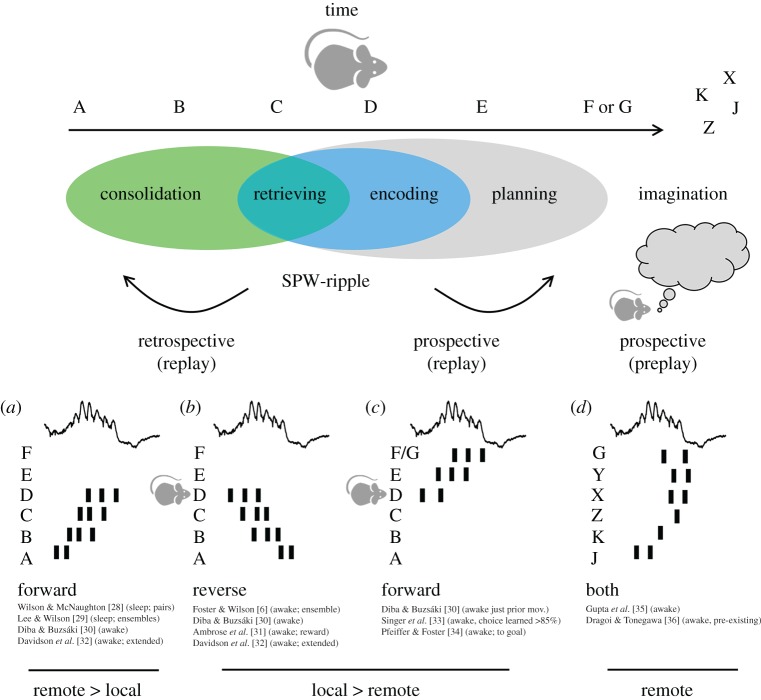Figure 1.
Miscellaneous patterns of replay potentially underlying different processes of memory consolidation, retrieval, planning and imagination. As the animal experiences a succession of events (represented by letters), some hippocampal neurons fire selectivity to build an abstract representation or cognitive map. During periods associated with sleep and immobility, sequences of these ‘place cells’ are co-activated in an orderly manner coordinated by sharp-wave ripples (SPW-ripples). The order of replay reveals the multifactorial influence of brain state and microcircuit physiology, as well as other procedural and cognitive factors. According to use, replay can be retrospective (engaging sequences already experienced) or prospective (engaging sequences ahead in time). According to the order, replay can be forward (in the same order as experienced) or reverse (opposite to experienced). Some sequences are not linked to experience and reflect a sort of preplay of events never seen before. Finally, according to the subject ‘location’ in the event space, replay can be local or remote. (a) Forward retrospective replay occurring remotely during sleep was the first form of replay reported in the literature [28,29]. Later reports showed it is also present locally during awake immobility and exploratory pauses [30] (b) Reverse retrospective replay is more typically present in awake conditions [6,30] and strongly influenced by novelty, reward values or goal-oriented tasks [31]. Forward and reverse replay can be concatenated along several sharp-wave ripples to accommodate extended experience [32]. (c) Forward prospective replay of already experienced neuronal sequences is typically seen before running for a goal or during choice learning [30,33,34]. (d) Preplay depicts sequences never experienced before and is correlated to or predictive of the activity during the future experience [35,36]. Preplay, which can be forward or reverse, is detectable in awake rest and in slow-wave sleep, and it has been proposed to play a major role in rapid encoding of novel information. (Online version in colour.)

